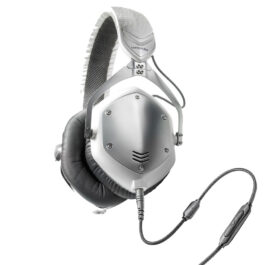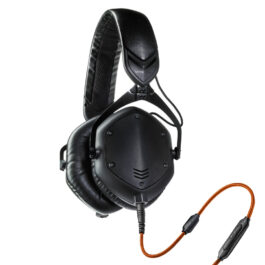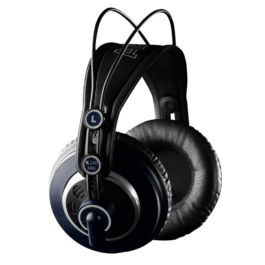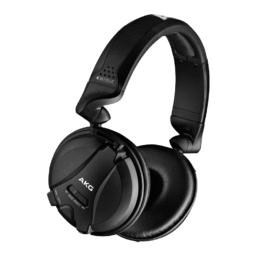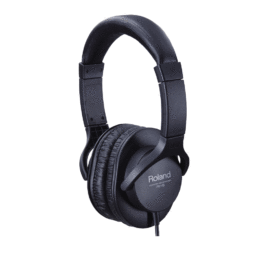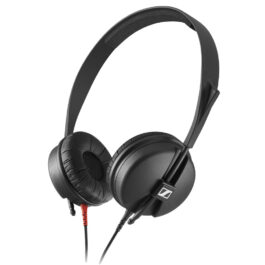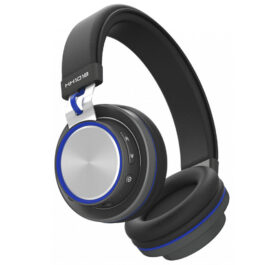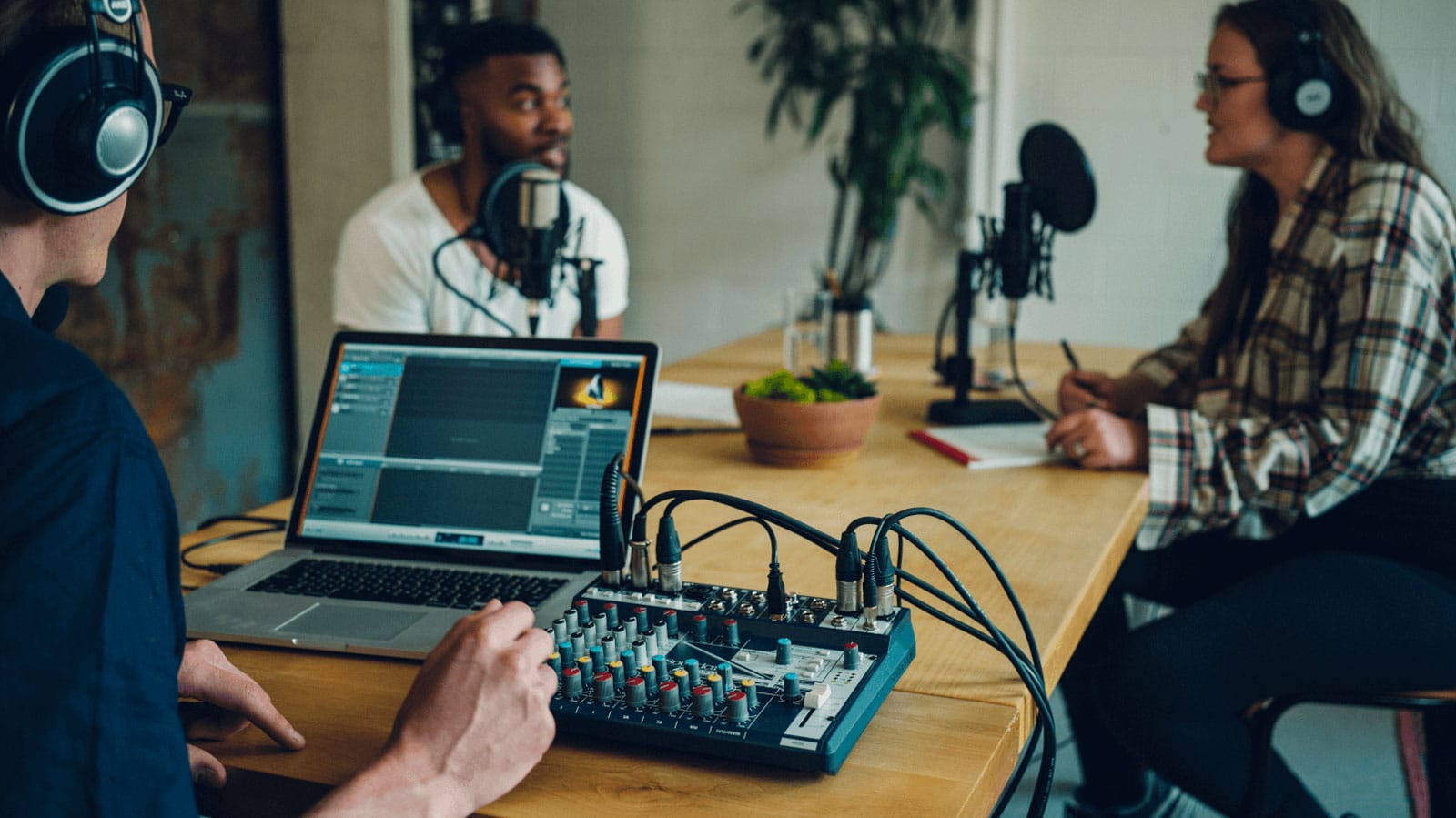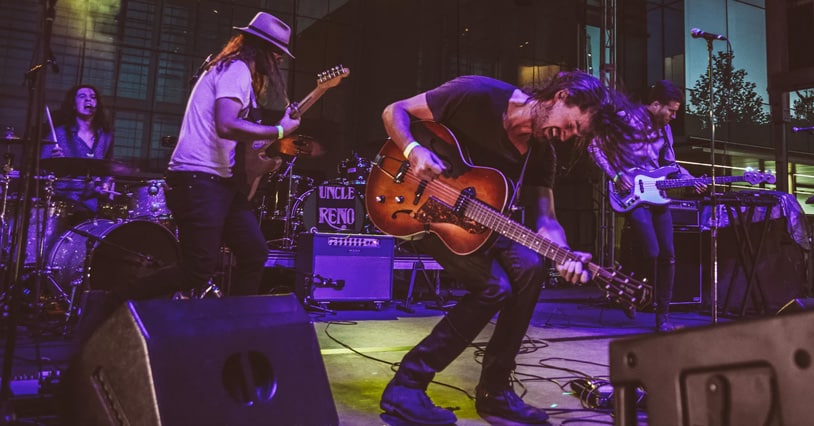
As a stage musician, it is imperative that you hear not only yourself, but that you can hear the rest of the band as well. That is why stage monitoring is a vital element to get right. If you can’t listen to what you’re playing, or where in the song you are, your performance will suffer.
Using your Amplifier
If you’ve never played on stage before, you might be wondering why you’d need monitors in the first place. After all, isn’t that why you have an amplifier? The truth is, is that in most cases your amp won’t cut it.
You can use your backline (the amps of all the musicians in the band) as a monitoring solution, but it’s not always ideal. To effectively use your backline, each musician must stand in front of their amp, with nothing disrupting the line of sight, and the amp should be tilted up to the player. Assuming your amp is powerful enough, you will get a clear idea of what you’re playing, and there should be enough “bleed” from the other players to hear what they’re playing.
But, if you want to walk around the stage, dance, or if you’re on a small stage where amps need to be stacked on top of each other, your backline will fall short.
Another thing to consider about your backline is that your on-stage mix can be a nightmare. If one member of the band has an over-powered amp, or if your drummer is an aggressive player who hits hard, getting the balance right is a chore.
On-Stage Wedge Monitors
Besides first using our amps at home, most of our first experiences with monitoring will be on-stage monitors. Any venue that takes live music seriously will have on-stage monitoring solutions.
At a bare minimum, a venue should have one on-stage monitor so that a singer can hear themselves. Of course, in an ideal world, there will be an array of wedge monitors on-stage, and every musician will have a dedicated monitor.
Wedge monitors are great because the mix to each monitor can be tweaked for each player. The guitarist might want the guitars and vocals to be prominent in the mix while keeping the bass and drums turned down. A bass player on the other might want a heavier drum mix.
Personal Monitoring
The problem with on-stage monitoring is that it varies from venue to venue. Adding to that, even if you play a venue with top-of-the-line monitoring, you’re still in the hands of a sound engineer. Nothing can ruin a monitor mix faster than an undertrained, overconfident sound engineer.
To circumvent this issue, musicians can switch to personal monitoring solutions like headphones or in-ear monitors.
Headphones
Depending on the genre of music you play, headphones might not be your best bet. Nothing screams metal like a zombie bass player, but add massive studio headphones and the look goes to pot.
There is a certain stigma about using headphones for live performances, especially if you’re a singer or guitarist. No one seems to care if a drummer is rocking the headphones, but a singer might get mocked.
If you decide to use headphones, ensure that you find a pair that fits snugly. If you start moving with the groove, you want to ensure that your headphones stay put.
In-ear Monitors
A majority of professional musicians either want or already have in-ear monitors. If you play on-stage regularly, then there is a better than not chance that you’ve had to contend with inadequate stage monitoring. The primary cause of lousy stage monitoring is either an under-trained or lazy engineer or the fact that not all venues have top-quality monitors.
Arguably, the most important element when it comes to monitors is the sound quality and mix. With in-ear monitors, you can take full control over your mix and tone while still having the freedom you need to run around the stage.
Shop Online for Monitors & Headphones
-
Request Stock
- Out of Stock
- Headphones
V-Moda M100 Crossfade White/Silver Headphones
-
R5,195R4,155FREE DELIVERY - Select options
-
-
Request Stock
- Out of Stock
- Headphones
V-Moda M100 Matte Black Headphones
-
R5,195R4,155FREE DELIVERY - Select options
-
-
Request Stock
- Out of Stock
- Headphones
V-Moda Crossfade 2 Wireless Rose Gold Black Headphones
-
R8,395R6,715FREE DELIVERY - Select options
-
-
- Headphones
AKG K240 MkII Studio Headphones
-
R2,995R2,335FREE DELIVERY - Select options
-
Request Stock
-
Request Stock
- Out of Stock
- Headphones
V-Moda LP2 Matte Black Metal Headphones
-
R3,495R2,795FREE DELIVERY - Select options
-
-
Request Stock
- Out of Stock
- Headphones
AKG K181 DJ UE Reference Class DJ Headphones
-
R2,595R2,075FREE DELIVERY - Select options
-
-
- Headphones
Roland RH-5 Multimedia Headphones
-
R1,295R905FREE DELIVERY - Select options
-
- DJ Headphones, Headphones
Sennheiser HD25 Light Dynamic Headphones
-
R2,895R2,295FREE DELIVERY - Select options
-
- Headphones
AKG K240 Studio Headphones
-
R2,795R2,265FREE DELIVERY - Select options
-
Request Stock
- Out of Stock
- Drums & Percussion, Electronic Drum Parts & Accessories, Live Sound, Stage Monitors
Roland PM-100 Personal Monitor For Roland’s V-drums
-
R13,450R9,415FREE DELIVERY - Select options
-


